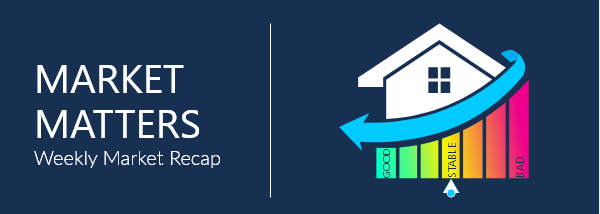Market Matters

This week has been relatively light in the way of economic data, the major piece being the CPI data. What is most interesting heading into the CPI print is that the 10-year is bumping up right against 1.50% and 1.52% resistance levels. With the CPI print, a hot number could take out those two levels and send us potentially to 1.59~1.62 level. Still, we had a strong initial jobless claims number followed by an ugly 30 year auction and the market barely blinked before trading back below 1.50%. We have the FOMC meeting and statement as well as the Powell Press conference next week. It wouldn’t be shocking if we see a faster taper announced at that meeting as the Fed has turned hawkish. The best bet is to be defensive up in front of that meeting.
 Initial Jobless Claims
Initial Jobless Claims
Initial Jobless Claims for the week ended December 4th, fell by -43k to 184k from a revised print of 227k (orig. 222k). This is a now a new record low print since 1969. The 4-week moving average fell sharply to 218.8k from a prior 240k, which is the lowest reading since March 7, 2020. Continuing claims, which lag a week, moved up higher to 1.992mln from 1.954mln (revised from 1.956mln). This is also now the first increase in four weeks. The total number of claims in all programs for the week ended November 20th fell from 2.298mln to 1.948mln. Pandemic emergency benefits programs continued to shrink, this time from 317k to 237k, and regular state claims fell from 1.816mln to 1.557mln.
 Mortgage Applications
Mortgage Applications
The MBA weekly mortgage applications index increased by +2.0% for the week ending December 3rd. Purchase applications fell by -5.0% and were -8.0% lower than the same week last year. Refinance applications increased by +9.0% and were -37% lower vs. the same week a year ago. "Mortgage rates declined for the first time in a month, prompting a pickup in refinancing, with government refinances increasing more than 20 percent over the week. Borrowers are continuing to act on these opportunities, but if rates trend higher as MBA is forecasting, the window of opportunity to refinance will continue to get smaller," said Joel Kan, MBA's Associate Vice President of Economic and Industry Forecasting. "The purchase market was slower last week, with applications falling after four consecutive increases. Activity is still close to the highest level since March 2021, which is a positive sign as the year comes to an end. Purchase activity continues to be constrained by a lack of inventory, combined with rapid rates of home-price appreciation and mortgage rates higher than in 2020."
 Q3 Productivity
Q3 Productivity
Q3 productivity showed a -.2 percentage point decline to -5.2% annualized, while labor costs rose +1.3 percentage points to +9.6%. Within the data, slow growth but a large increase in employment vs. Q2 offset what was a heavy drop in productivity. The annualized productivity drop is the largest since Q2 1960, as output rose +1.8%, but hours worked jumped +7.4%. Compensation per hour was up +3.9%, but real hourly comp was down by -2.5%, the worst is a year. The YoY productivity rate dropped from +1.9% to -.6%, now posting the first negative since Q2 2016 and the largest drop since Q3 1982. Unit labor costs, however, saw an increase by their largest since Q3 1982, rising from +1.3% to now +6.3%.
 International Trade Deficit
International Trade Deficit
The international trade deficit shrank in October to $67.1bln from a revised $81.4bln (orig. $80.9bln). The headline was driven by a huge gain in exports, up +8.1% ($16.8bln) to $223.6bln, while imports were up by a modest $2.5bln (+.9%) to $290.7bln. The good deficit declined sharply to $83.9bln (-14.3%) from a record high of $98bln. The services surplus was up only +$.3bln (+1.7%) to $16.8bln.

